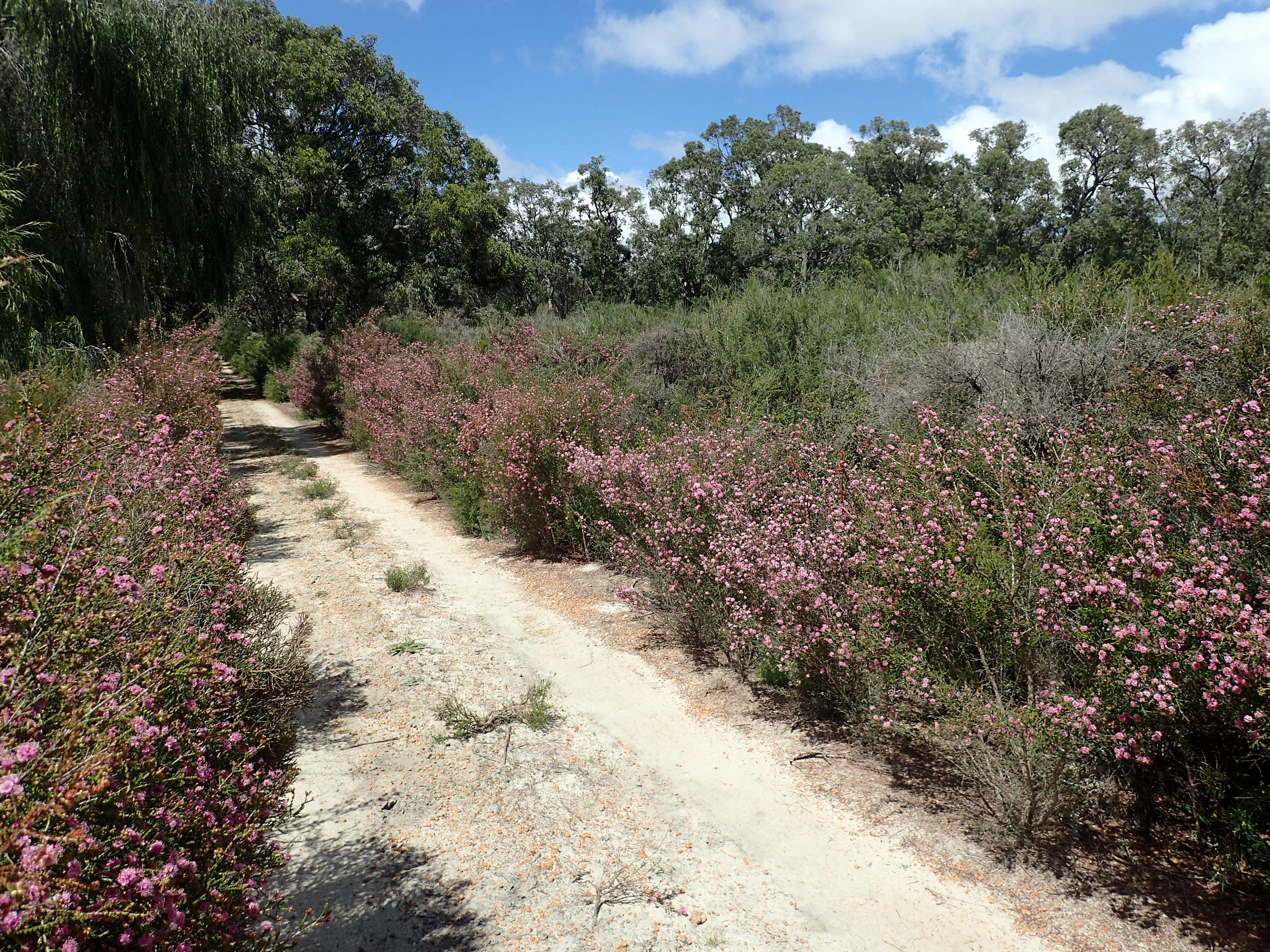Kunzea Rostrata on:
[Wikipedia]
[Google]
[Amazon]
 ''Kunzea rostrata'' is a species of flowering plant in the myrtle family,
''Kunzea rostrata'' is a species of flowering plant in the myrtle family,
 ''Kunzea rostrata'' is a species of flowering plant in the myrtle family,
''Kunzea rostrata'' is a species of flowering plant in the myrtle family, Myrtaceae
Myrtaceae, the myrtle family, is a family of dicotyledonous plants placed within the order Myrtales. Myrtle, pōhutukawa, bay rum tree, clove, guava, acca (feijoa), allspice, and eucalyptus are some notable members of this group. All speci ...
and is endemic to an area along the south west coast of Western Australia. It is a shrub with small, mostly elliptic leaves and with groups of between mostly eleven and fifteen rose pink flowers mainly on the ends of branches that continue to grow after flowering.
Description
''Kunzea rostrata'' is a shrub with many branches and that typically grows to a height of . It has elliptic to egg-shaped leaves long and about wide on a petiole long. It has more or less spherical groups of flowers on the ends of branches that continue to grow after flowering. There are usually between eleven and fifteen rose pink flowers in the groups. There are egg-shapedbract
In botany, a bract is a modified or specialized leaf, especially one associated with a reproductive structure such as a flower, inflorescence axis or cone scale. Bracts are usually different from foliage leaves. They may be smaller, larger, or of ...
s long and about wide at the base of the flowers and well as pairs of similar bracteoles. The floral cup
In angiosperms, a hypanthium or floral cup is a structure where basal portions of the calyx, the corolla, and the stamens form a cup-shaped tube. It is sometimes called a floral tube, a term that is also used for corolla tube and calyx tube. It ...
is long at flowering times. The sepals are triangular to lance-shaped, and glabrous and the petal
Petals are modified Leaf, leaves that surround the reproductive parts of flowers. They are often advertising coloration, brightly colored or unusually shaped to attract pollinators. All of the petals of a flower are collectively known as the ''c ...
s are egg-shaped and about long. There are between 25 and 38 stamen
The stamen (plural ''stamina'' or ''stamens'') is the pollen-producing reproductive organ of a flower. Collectively the stamens form the androecium., p. 10
Morphology and terminology
A stamen typically consists of a stalk called the filame ...
s long in several whorls
A whorl ( or ) is an individual circle, oval, volution or equivalent in a whorled pattern, which consists of a spiral or multiple concentric objects (including circles, ovals and arcs).
Whorls in nature
File:Photograph and axial plane floral d ...
. Flowering occurs in October and November and the fruit is an urn-shaped capsule.
Taxonomy and naming
''Kunzea rostrata'' was first formally described in 1996 by Hellmut R. Toelken and the description was published in '' Journal of the Adelaide Botanic Garden''. Thespecific epithet
In taxonomy, binomial nomenclature ("two-term naming system"), also called nomenclature ("two-name naming system") or binary nomenclature, is a formal system of naming species of living things by giving each a name composed of two parts, bot ...
(''rostrata'') is a word Latin meaning "beaked", referring to the point on the tip of the sepals.
Distribution and habitat
This kunzea is only known from the area between Cape Naturaliste peninsula and Cowaramup Bay near Gracetown, often found growing in grey sands or peaty soils along the coast.References
{{Taxonbar, from=Q15368685 rostrata Endemic flora of Western Australia Myrtales of Australia Rosids of Western Australia Plants described in 1996 Taxa named by Hellmut R. Toelken